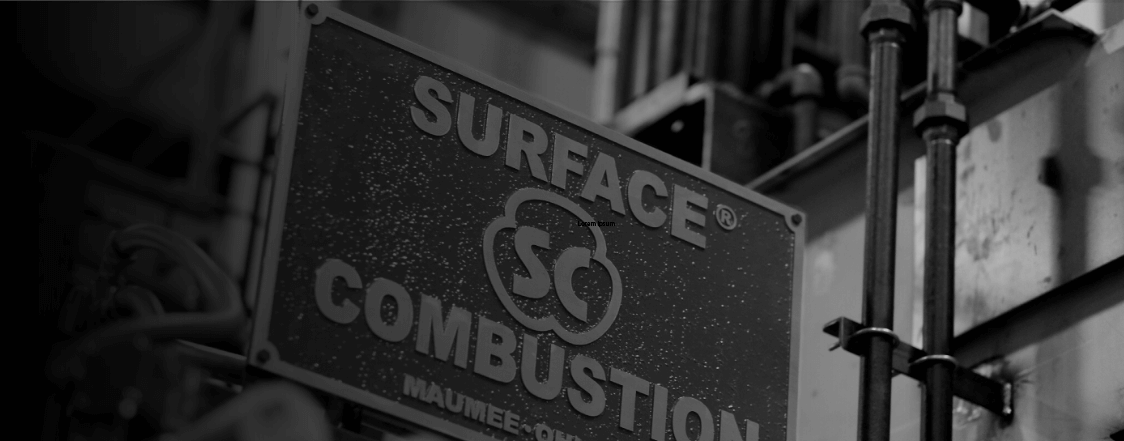Pusher Furnaces

Surface® Combustion’s pusher furnaces start with an insulated hot zone, typically with bricked floor and walls and a fiber-lined roof. The heating source can be direct or indirect gas fired or electric elements. For those products requiring an internal atmosphere, only indirect gas firing and electric heating may be used. Endothermic (RX®) gas or exothermic (DX®) gas forms the base gas necessary for through hardening, carburizing, annealing or normalizing. The internal alloy rolls, rails and trays are a high-grade alloy construction. Pusher mechanisms are traditionally electrically actuated ball screws or can, in certain instances, be hydraulic cylinders. These are continuous style furnaces and so products enter and exit through separate charge and discharge ends. There are typically vestibules which are separate chambers to preserve internal atmosphere integrity. At the exit, an oil, polymer or water quench can be incorporated for hardening or carburizing processes. For annealing or normalizing, an atmosphere cooling chamber is used to slowly cool the load or it can be discharged into air. Traditional and boost diffuse carburizing (where zone separation is necessary for different process step temperatures or carbon potentials) can be performed in this style of furnace. Typical tray width is 2 to 5 ft. and furnace lengths are generally limited to a calculated tray column length. The operating temperature of higher temperature furnaces is typically from 1400°F to 1950°F as this is a radiant/conduction style of heat transfer to the load. Lower temperature styles for tempering or stress relieving are from 350°F to 1400°F and typically incorporate convection fans.
The conveyance method changes based upon tray load weight. Light loads use a pusher tray skid type where the basket supporting the tray is horizontally pushed tray on tray over the top of an alloy or silicon carbide rail set. There are two other alternatives variations. Pusher roller rail furnaces operate in a fashion where the trays are pushed tray on tray on top of conveyor rollers located in trunnions and run throughout the heated length of the furnace. This type is used for heavier loading as the rollers significantly reduce the frictional factors. Finally, pusher roller trays have the rollers incorporated on the bottom of the trays, and these trays roll through the furnace on guide tracks. This style is used for the heaviest of loads and allows for the rollers to be maintained when the trays exit the furnace.
Each product being processed will require a different type of pusher tray set up. Surface has a complete selection of pusher tray type furnaces and will help you select the best option for your process.
Learn more about integrating automation into a pusher furnace HERE.
Maximum of 8 rows available
Ceramic fiber or brick insulating systems
Maximum operating temperatures up to 1950°F
Electric, direct gas-fired (recuperative and regenerative) and radiant tube systems available
Controls meeting the requirements of AMS-2750 or CQI-9 can be provided as requested
High-temperature alloy or silicon carbide hearth
Surface One Row® Pusher Furnaces have a unique round cross section design which requires 20% less surface area than a conventional rectangular cross-section design of a comparable size
Proprietary VF™ fan extends fan life by minimizing vibration and gives uniform atmosphere distribution
The use of vertical heating tubes provide full radiation view of the work and requires no special tube hangers
Fully automated controls allow for process repeatability
Fully guided tray travel via silicon carbide or alumina rails
Inner door housings are relatively small in volume allowing for fast purging while using less atmosphere gas
Annealing
Calcining
Carbon Restoration
Carburizing
De-Waxing
Ferritic Nitrocarburizing (FNC)
Hardening
Malleablizing
Normalizing
Pre-Heating
Stress Relieving
Temper
Partial processes list shown. Looking for something specfic, contact us.
Agricultural
Automotive
Bearings
Commercial Heat Treating
Fasteners
Firearms and Firearms Components
Gears
Off Road/Mining/Excavation
Trucking/Bus/Rail
Wire
Partial industries list shown. Looking for something specfic, contact us.
Aerospace Components
Aluminum
Bearings
Cast Iron
Casting
Fasteners
Forgings
Gears
Pinions
Rod Coil
Stainless Steels
Steel
Titanium
Wire
Partial material and component list shown. Looking for something specfic, contact us.
Atmosphere Generator
Press Quench Chambers
Load/Unload Washers
Partial companion equipment list shown. Looking for something specfic, contact us.
Surface® is Your Source
CONTACT US TODAY, and let us show you the Value of Surface™
